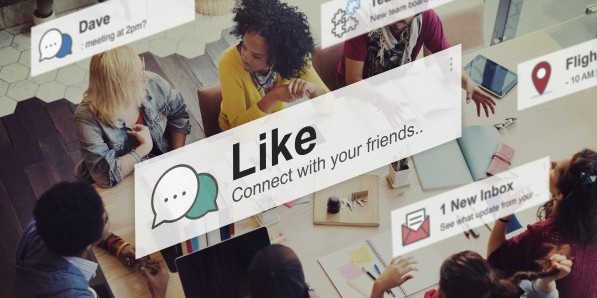In today’s culture, social media has an incredible power to reach people within your network of friends and beyond. According to an Ofcom study on media use, 9 out of 10 children in the UK have access to internet at home, whether it be via a tablet, mobile phone, desktop or laptop. Therefore, it has never been easier to build a presence online in order to connect with students, parents and teachers via social media platforms like Facebook, Twitter and LinkedIn.
What are the benefits of using social media for education?
Many parents like to feel up to date with what their child is doing at school, and with 75% of parents with internet access using Facebook alone, social media is becoming an increasingly useful way to keep parents in the know about their child’s curriculum, day-to-day activities and events. Schools can do this with the ability of updating social media pages with pictures of events like school trips and performances, which in turn can update the school website automatically.
Social media can also be beneficial for teachers, as it can allow them to share information or learning materials with each other. It is also a valuable tool to let teachers know about events or any changes in plans and doesn’t have to be in the public domain. 69% of teachers believe that social media has had a major impact on the way they interact with their colleagues, which means it is now easier for teachers to communicate with each other within a socially secure network.
What are the dangers of using social media for education?
It is important to make sure that social media platforms are up-to-date and managed by people who understand how they work. If the page is disorganised, boring and doesn’t actively engage with its target market, what could be potential followers may be discouraged and feel that the school or college doesn’t care about keeping them in the know. A good way to improve this is by keeping the page regularly updated and fun so that it’s engaging with followers and speaking to them in a language they understand and respond to.
On most popular social media platforms, we have the ability to monitor content in order to ensure a safe, friendly community for users on your page. It is easy to worry about the dangers of social media, as cyberbullying and “trolls” have dominated the limelight of news reports regarding social media however this can be managed. “Trolls” are people who, when on social media, tend to interact with others in a negative way by bullying or harassment, however, new developments on popular platforms like Facebook, Twitter and YouTube mean that you are able to report and block specific users, banning them from connecting with you or your page. The social platforms are then alerted to this and may even suspend the reported users from using the sites altogether.
Additionally, it is important to get consent from everyone who appears on your social accounts, both publicly or privately. Many parents or students may feel uncomfortable with their own or their child’s picture or name being posted online, therefore, it is important to implement a policy where students and/or parents are able to choose whether they want to appear online in the form of pictures or text, etc. This can easily be undertaken at the start of school years where a photography release form is signed, granting the school access to use the child’s name/photograph in it’s advertising.
It is important to understand that different social media platforms have different guidelines and rules and if you are unsure you can always contact them directly for a copy of these.
What platforms are there?
Facebook is currently the world’s most popular social network, with over 1.7 billion active users as of 2016. You can attach a phone number, email and address to your Facebook page, interact with other users via wall posts and direct messaging, and update your page with pictures, links and videos. This gives a Facebook page the power to directly address your audience. However you can also create groups and events that benefits schools and colleges who want to engage with users frequently. For example the school football team might have their own page where they can promote upcoming matches whereas the main school might use their page to advertise career workshops or parents’ evenings.
Twitter is another very popular social network, and is also a good way of keeping followers in the know about events and updates, and, like Facebook, provides a platform for you to connect with other users directly through messaging. This means that if someone has a question they would like to ask, they can be encouraged to connect with you directly. It is important to check these sites daily in order to make sure people understand that your page is worth following, therefore increasing the involvement of potential applicants or future students and parents.
Youtube can also be a good way of reaching potential followers like students, parents and teachers by videos. Followers can then subscribe to the YouTube account, meaning the videos show up in their subscription box. YouTube can also link to Twitter and Facebook and is a great way of creating content that will be interesting for parents, students and teachers to watch. YouTube could be useful in creating videos of tours around the buildings, giving information, and promoting past/upcoming events.
Want to know how your institution can use social media to target students and parents? Contact Mark or Alice today on 0121 321 2828 or email studio@creativeinsight.co.uk
See related case study:










